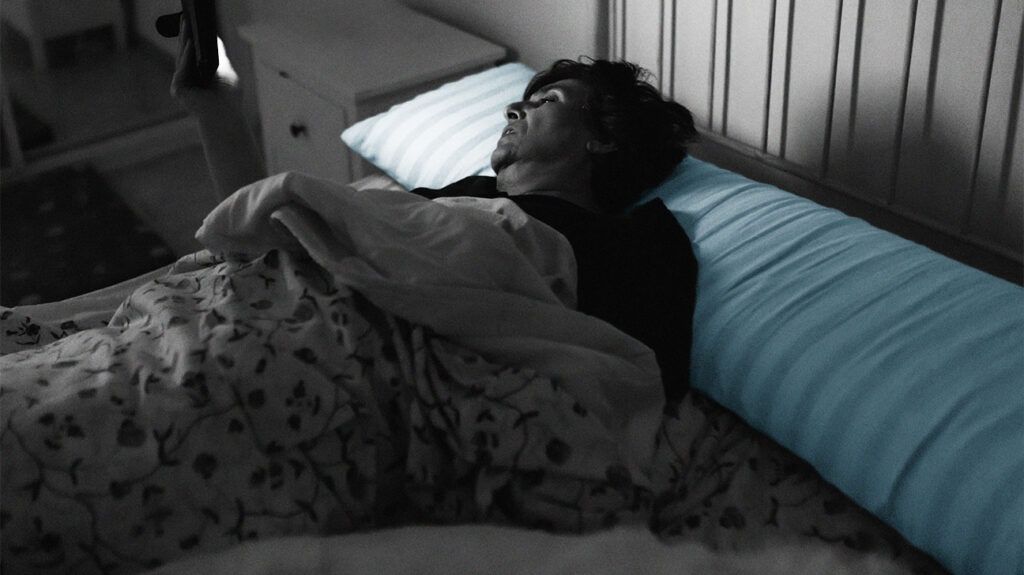Chronic obstructive pulmonary disease (COPD) affects sleep. Opting for a slightly upright position may relieve chest symptoms and improve comfort.
Quality sleep is essential for overall health and well-being, yet achieving restful sleep can be challenging for individuals with COPD. This lung disorder significantly affects daily activities, sleep quality, and nighttime comfort.
Finding the best sleeping position for those with COPD is crucial for managing symptoms and ensuring optimal sleep. Chest symptoms can worsen when lying down, so many people find it more comfortable to prop up their heads and sleep slightly upright.
This article examines the best sleeping position for those with COPD and other approaches that may improve nighttime comfort.

People with COPD
An elevated head position also eases obstructive sleep apnea (OSA), a condition
By optimizing their sleeping position, those with COPD can enjoy a more restful night’s sleep and better overall respiratory function.
Learn more about sleep apnea and COPD.
What is COPD?
COPD is a progressive lung disorder that involves long-term respiratory symptoms and airflow limitation. Chronic bronchitis and emphysema fall under the COPD umbrella, leading to difficulty breathing.
The primary cause of COPD is exposure to irritants, such as cigarette smoke, that trigger an inflammatory response in the lungs.
Good sleep hygiene is vital for individuals with COPD to maximize sleep quality. It
- establishing a regular sleep schedule
- creating a comfortable and allergen-free bedroom environment
- avoiding stimulants such as caffeine and nicotine before bedtime
- avoiding large meals before bedtime
- limiting naps during the day
- restricting exposure to screens such as TVs, smartphones, and tablets at least an hour before bed
Additionally, engaging in relaxing activities, such as reading, gentle yoga, or meditation before bed, can help ease the transition to sleep.
Healthy lifestyle changes can improve the quality of life for those with COPD. These may include:
- taking regular, moderate exercise, such as walking or water aerobics, to strengthen the respiratory muscles
- quitting smoking and avoiding exposure to lung irritants to manage COPD symptoms
- eating a balanced diet rich in fruits, vegetables, and lean proteins to support overall health and well-being
Using supplemental oxygen during sleep can help some individuals with COPD. It significantly improves oxygen saturation levels, enhancing sleep quality and overall health.
A person can use a mask or nasal prongs to deliver oxygen therapy as they sleep. They require a prescription from a healthcare professional and must ensure proper use and maintenance of the equipment to ensure its effectiveness.
Bilevel positive airway pressure (BiPAP) therapy is a form of noninvasive ventilation that
BiPAP devices deliver higher air pressure as the person inhales and lower pressure when exhaling. The therapy particularly benefits those with difficulty expelling air from their lungs, improving sleep quality and daytime alertness.
Continuous positive airway pressure (CPAP) therapy is a
CPAP machines maintain constant air pressure throughout the breathing cycle, keeping the airways open and supporting more stable breathing during sleep.
Both COPD and OSA can cause frequent awakenings during the night, significantly fragmenting sleep and reducing its overall quality. CPAP therapy minimizes these disruptions by preventing apnea episodes and reducing respiratory distress.
This leads to longer periods of uninterrupted sleep, allowing for more restorative sleep stages essential for cognitive function, mood regulation, and physical health.
Generally, treating COPD
Treatment aims to alleviate symptoms, improve quality of life, and slow disease progression. Individuals with COPD must work closely with healthcare professionals to develop a personalized treatment plan.
Living with COPD can be challenging, but support is available. Joining a support group, either in-person or online, can provide valuable advice, coping strategies, and emotional support from others who understand the challenges of living with COPD.
The American Lung Association provides a helpline, so people can consult a lung expert by calling 1-800-LUNGUSA (1-800-586-4872 and press 2).
Healthcare professionals can also offer resources and referrals to additional support services.
Managing sleep with COPD requires a comprehensive approach with several methods. These include optimizing sleep positions, adhering to good sleep hygiene practices, making lifestyle changes, and possibly using oxygen therapy or ventilatory support.
By addressing these areas, individuals with COPD can improve their sleep quality, enhancing their overall health and quality of life. Those with the condition must consult healthcare professionals to tailor a treatment and management plan suited to their needs.
